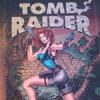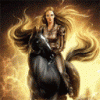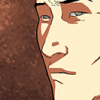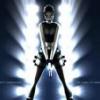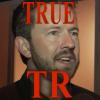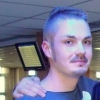Transcript: E3 Community Ambassador Group Interview
Featuring Karl Stewart, and Brian Horton (who joined about halfway through)
Q: What makes this Tomb Raider better than the other ones you've released?
Karl Stewart: I think one of the things that we want to make sure we preface with...The last 15 years, we've seen some phenomenal Tomb Raiders. I don't think it's a case of saying that this one is better than any of the other ones. I just think our goal is to create something that is very unique and very new. We have an opportunity to take a beloved franchise like Tomb Raider and bring it back to an origin story where we almost sort of bring it to... Not just a broader audience, but we allow people to feel like they now know who she is. Give her a very unique personality. And make her, as most of you have read, sort of culturally relevant for today. Because Lara, as you know, the years... She kind of became a caricature. You knew she had her guns, you knew she had the outfit and the personality that she had, but you never knew very much about where she came from.
For us, we set the goal of saying, let's take the opportunity to go back to the very beginning, and when you do that, go back to the very beginning, you then have to look at who the character is today. We've looked at a lot of franchises, I know you've read that I talk a lot about the Batman analogy. It's the easiest way to sort of explain what our challenges are and move forward with it. We looked at Batman, and it falls into sort of three different categories. The first one is, you have that original Batman, the Adam West, right? We all know what Adam West looked like back in the day, real kitsch, kinda cool-looking product of its generation. And then you move into the George Clooney, Val Kilmer idea of what Batman was for the '90s. And then you move into the Christian Bale, you move into that era where Batman is re-imagined and re-invented for today's audience.
We look at Tomb Raider and think, the first Tomb Raider right through to Angel of Darkness, you look at that and think, it's a product of its time. I'm not saying it's an Adam West Batman, but it was a product of its time and it did very well, people loved it. Then you moved into the Legend, Anniversary, and Underworld, and again, it was a product of its time, very successful. But we've moved to a space where we believe that the audience, and I include yourselves there, you want to know where she came from. You want to feel a connection to our character that you've never really felt before. We're not trying to say this one's the best ever, this is going to be the best of all of them. What we're trying to do is create a very unique experience for this audience, and for you, for today. Make you feel like you're now connected to a character that you love in a very unique and different way. And most Batman fans look at Christian Bale and Christopher Nolan's Batman... They still look at Adam West... I'm a big Batman fan, right? I still love all the Batmans. There's still something cool about George Clooney being Batman. Kind of bizarre, but there's something cool about it. So it's not like we're trying to re-invent the wheel too much. It's more about, we just think this is an opportunity to do something very unique and new.
Q: They have been re-imagined, but the scenario that's surrounding the character remains very important in the Batman and James Bond storylines...Did you do that for Tomb Raider?
Karl Stewart: I think the James Bond analogy... James Bond had certain traits that, again, were relevant to his time. A lot of the study that I did with that character was looking at, when James Bond came out, a license to kill, traveling around to these exotic locations, and getting the girl at the end of the movie, that was again a product of its time. It was something about what he did. He drove a particular car, you knew a little bit about his background, he drank his martini shaken but not stirred. All these little things that make him iconic and that you remembered. But for this James Bond, they kept some of those traits, but they also looked at traits that they didn't need to have. He didn't need to get the girl all the time. Instead of getting the girl, they showed that all of a sudden he could fall in love. All of a sudden emotions came up that he never had before. Which made him sort of multi-dimensional as a character, where before he was one-dimensional. He was like, "James Bond, license to kill, I can do whatever I want." Those days are gone for them.
You look at James Bond today, it feels like there's more of a connection. So what we're trying to do with Tomb Raider is ensure that you still feel connected to the character, you still feel like I know the iconic moments... Now, I have to be careful not to spoil anything, because what we've shown so far and what you've seen is really just a snippet. We've broken up this game into bits or phases, where right now, it's about telling the journey of how she becomes stronger. We didn't want to start the journey where she has pistols and a shotgun... You're getting each of these elements along the way and you're starting to understand her a little bit more. We've really just scratched the surface of her even meeting people.
So we'll start to show a side of her personality. It's very key to us that we keep certain traits to make sure that it's the Lara Croft that we all love. We will start to see that come through. I can't speak for you, but the hair stood up on the back of my neck when, for us, the first time, playing this game, in the alpha phase you can really play the game from start to finish, and you get an hour or so in, and all of a sudden she jumps off a ledge into her first tomb. You stand there going, oh my God, she's discovered it for the first time, and she's a little bit in awe herself, because this is what she wants to do.
Those are the moments that we want people to go, “I remember the first time she ever came across a tomb.” So we want to make sure we still have those iconic moments, and I don't want to spoil too much, because that really is the joy of playing it for the first time, experiencing those things, and making the hair stand up on the back of your neck when you say, I will remember that. Much like the demo yesterday, when she had to kill that guy for the first time. That's a young girl... She just wants to go on an adventure. She didn't think that in a couple of days after setting sail on the ship, she's going to have a guy on top of her and she's going to have to shoot him. Our goal is to make sure you still have a relationship and a connection with the character, she will have traits that you'll look at and say, I see Lara Croft start to shine through.
Q: When you decided to start over with Tomb Raider, was it clear from the beginning that it would still be Lara Croft as the hero of the game, or did you also think about replacing the main character?
Karl Stewart: No, it was always very clear. It was always going to be Lara Croft, it was always going to be Tomb Raider. Nobody else would have come close. I don't see the point in doing it if it wasn't Lara Croft.
Q: Do you have in mind, when you show the trailers, how to avoid spoilers? For example, in the trailer we can see the helicopter, you can see that approach... How do you deal with that?
Karl Stewart: So what we try to do with spoilers is not very literal. In a sense that, I don't want to tell you the first time she does this, the first time she does that. Because that really spoils... But when putting together a trailer in particular... You watch movie trailers all the time. A great example is, you watch a Batman trailer or you watch a James Bond trailer, you get a full snippet of the movie. Prometheus is a great example. We watched the Prometheus trailer, and I'm going to a midnight showing tonight because I'm such a big fan of Aliens, but you watch that trailer and you go, I want to get that arc, I want to understand, I want to see all these different beats that make me feel like I'm going to put my money down and buy that.
If we were to only make trailers based on the concept of what we're showing right now, you'd only see one dimension. You'd only see that one thing, and that doesn't inspire you to want to know more. So we do put in snippets inside our trailers to show where we're going with it, so the audience overall can feel like, okay, I know that it's not just about a journey, I know she's going to get stronger, I know she's going to have a gun, I know she's going to fight. You see that helicopter, that just brings up questions. I'm not going to tell you what happens with the helicopter.
Putting together a trailer really is an art form, we spend a lot of time trying to manage...We brought on Ignition, Ignition Creative, based in LA, who I've worked with quite a lot in the last few years. They were the guys behind all the Batman trailers, the Prometheus trailers, they're not cheap, but when you sit down with them, and they put together a video game trailer on the same principles and strategies as a movie trailer, they bring to light things that we simply didn't think about. We had a large array of snippets from the game, they played the game from start to finish, they came back and said, you have your vision and here's how we can add to that. Here are the things we think you can tease from this and here's the story you can tell. Between us, we created that trailer. We believe you need to see some of that. You have no idea at what point it happens. We don't put it in chronological order, so halfway through the trailer means halfway through the game. It's more of a tease.
Q: With the movies, sometimes they'll put in the trailer one single scene right at the end, that's more important than it is in the movie...
Karl Stewart: Sometimes it's very hard to compare directly to movies, because... Knowing and working with a lot of movie people, I tend to find that their trailers are created in one of two ways. One is, if they know they have a really good movie, they try and hold back. They tease you just enough and they hold back. And you can generally tell that, they'll be up there getting their audience share points when they go and show it to audiences around the country, and they make a decision on how far they're going to push. And in the same sense, if a movie's not trending too well, and they need to spend some more money, then they pick all the best parts of the movie for the trailer. You watch and think, oh, it's really good, and all of a sudden you watch it and...Wow. All the best parts were in the trailer.
For us, we brought in the best in the industry to work with us, we spent a lot of time trying to make sure we carried that story to the very end. You do have to be careful, we don't want to spoil anything. It kills me to think that I've sat and I've played the game maybe 25-plus times from start to finish, and after a while you just become desensitized. I hate that, the fact that I've played it so many times, I don't... I still appreciate that the audience hasn't had the chance to experience it. There's a very different way in which you experience watching a movie, versus when you play a game. When you play a game, you're in control. So I'm trying to make sure I don't spoil anything for you. Keep it so you pick it up and play it for the first time and the hair stands up on your neck... We tease a little bit, but I don't want to spoil anything.
Q: I was curious, did you use an actress as a model for the face? How did you go about choosing what she looked like? I see a strong resemblance to a British actress, Rosamund Pike, from Die Another Day...
Karl Stewart: So the process we went through, and Brian was obviously talking in some depth about it... Brian and I started both around the same time, I kind of watched his process a lot. He went through iteration after iteration of what he liked in a character, and what he was able to bring across...To feature what we liked in the Lara Croft of yesteryear, and yet it felt fresh and relevant.
I think at one point he had lists and lists of girls and faces. It almost got to the point where he was like, I like her eyebrows, but I don't like her nose, I like that chin, I like that face... Brian actually went to work on bringing all of that together. If you watch the making-of, we did a making-of trailer for Game Informer, he literally started from scratch in that respect. It's the same process that Brian went through to create Lara in the first place. Brian is art director, we'll talk together, but there were some key people involved, myself included, who just every now and then locked ourselves in a room, brought it up on the screen and looked at all the different comparisons, and really went into the details of some of the smaller things. Like the M in her lips. One of the things that, over time, could become iconic, but still make it feel like Lara.
So it started from a blank canvas of, we like the eyes here, nose there, mouth there, put it all together. We will probably print an artbook for the launch, so in the artbook we're going to make sure that we show an evolution of where it started. Because there's still some concept art up on the walls of the studio, and it's pretty awesome to see how far we've come with a character that started as the Lara Croft of Underworld, and then taking the radical steps to a place where... You look at it and you say, really, we're trying to be something that we're not. And then you start dialing it back in, and bringing it into line, and then you get what we see today. It's not literally just, there's one girl, we like her face. It's an amalgamation of many different attributes. The funny thing is, it's not as easy as you think to take a pair of eyes, a nose, and then ears from different people and put them all together, because you get such strange-looking faces... You have to be able to blend them in order to get a new look.
Q: Every one could feel different, this one has bigger eyes, this one has a smaller nose, then they all have to come into agreement.
Karl Stewart: That's a good point as far as how far you can push the character. When designing Lara, it was very important that it's not just creating a character where you look at her and you say, she's beautiful. You have to be very careful that... We're putting this survival filter over everything, bringing the player to situations that you've never seen Lara in before. There's the great example of that first kill, we want you to feel like it's real. We want you to feel like it's going to actually happen. It feels like it's happening to a real person. Therefore we have to make sure that the character, you have a connection with that character, you feel like she's somebody who you could possibly meet. Because it heightens the sort of tension, heightens the personality, the closeness to the emotion of what's happening.
You still have to make sure that you can achieve that, have a character that allows you to achieve that. To have a caricature, somebody who... Let's say you put in Lara from Legend. We don't believe you'd be able to get the same emotion from that character, because she wouldn't feel as real. You'd feel like it was still the Lara that we knew. And she's still... She's beautiful, but... We know that she has very long legs, she's very slim, great posture, but it's trying to make you feel that connection... Therefore, there's a balance. You want to make sure the character feels almost like someone you could meet.
Q: Tomb Raider has always had great music that was really immersive. Can you tell us who the composer is?
Karl Stewart: You're right, Tomb Raider has always had awesome soundtracks. We've been very keen to make sure that for this game we have an awesome soundtrack, and we are creating a soundtrack right now that will be released at launch. You've seen most of my tweets, I love soundtracks. I listen to soundtracks 99.9 percent of the day, I don't listen to words in songs, and I've got every movie that I can think of that I love... So we're very passionate about soundtracks. With that, we made sure we've chosen the right team of people, including a composer, to be able to bring together this soundtrack. Again, we are getting very close to announcing this person...
What I'm trying to do, so you're aware for all your sites... As you know, most campaigns, all of a sudden out of nowhere you hear, oh, this person's the voice, or this person's making the music, this person's written the script, and there's no real...understanding of how the process happened or why it happened or how we chose that person. So what we're doing over the course of the campaign, starting in about, let's see... I don't want to put an exact date on it because it may change, but let's just say in the next month, we're going to announce who the voice of Lara is. And then from that, every eight weeks we're going to announce a major part of the game. So for instance we're going to announce who the script writer is, we're going to announce who the composer is, we're going to do that all the way through the campaign, so that we make a big deal about these pieces of information. We give it the prestige that it deserves. It's a very big franchise, and if you were to watch the making of a movie, you know that when a director comes on board or an actor comes on board, it's a big deal.
It's not about just the fact that we make the game and the studio, once again there's some phenomenal talent... What we're trying to do is present that in a way that allows us to show that it's not just that person or that talent, it's about a process that they've gone through to get to where we are today, and it's about bringing that to life in a very definable approach that you feel like... It allows you to see a part of the game and a part of development that you never imagined happened.
What we're doing with Tomb Raider, we're doing some very exciting, very unique and different things that we've never done at Crystal, let alone on a Tomb Raider game. We want to make sure that when we announce these types of things, whether it be the composer or the script writer, we do it in a way where... When you watch this or you read this you'll feel like that is something special, very special. We have some things that we've proposed that are very exciting. It's not just about, hey, here's the person. The composer has gone through extraordinary lengths to get the types of noises that you hear in the game, and then made music from them. I'm looking forward to watching them bring that to life. Expect it...We're going to do this probably over five different episodes, we're going to make the announcement on what that all means and how it's going to come to life in a few weeks. But in the next month, I'm very excited to be able to get our girl and bring her out there and show her off to the world, do some interviews with you all and chat about it. It's very exciting.
Q: Building on the question about the composer, and the influences for this game, was there any inspiration from previous Tomb Raider titles?
Karl Stewart: With a re-imagining, we always say the same thing, don't throw the baby out with the bathwater. And I've used that many times, actually I get people saying, explain that! [laughter] It sounds very extreme. But one of the key things with every aspect of Tomb Raider is we can't forget who we are. In making all these changes, we don't want to forget that we have an identity, we have a formula. Something that's unique. And in everything that we do, whether it be casting for a new Lara, getting the voice right, down to composing and trying to find the right music, we still looked back at what made Tomb Raider Tomb Raider. There were certain things that will become iconic in this and you'll remember... We'll have sort of throwbacks or an element where you'll think, I remember that, even small snippets. But what I will say is that this one is very fresh and very new. And it's more about the game that you're playing, about the world that we're building. And also about setting a foundation for the future of the franchise. We want something to become iconic that belongs to this game. We also want it to be familiar, yet different.
Q: It's a tall order...
KS: It is a very tall order. And I think, you know, again, getting back to...Looking at, for instance, the music of Batman, I listen to the music scores constantly, listen to film scores constantly. And I look at the Batman score, it's probably one of my favorites, because they made it iconic, they've made it their own, and some of the music that was in that has crossed over into many other movies and many other scores. Because it became so powerful, had such an identity for that movie, that people now look at that and go, that's Batman. When you hear the trombones going BRRRM, BRRRM, you think, I've heard that before. Of course it gets overused in some cases. But for us we want to make sure that it's familiar, yet different. You'll still listen to it and say, I know certain things... And that isn't in a literal sense, where you'll here the chime when she picks something up or when she puts it in her backpack, those are all the small little things that you have to push aside and look at what becomes iconic.
Q: Do you go through puzzles, like in the past episodes? Or are you not making puzzles?
Karl Stewart: We've placed Lara in a world that has existed before her. In the sense that we have these scavengers, and we have the mystery around the island. They've created these contraptions...And Lara's been put in a situation where, unlike before, where she would go in and have to pull levers and move rocks and align stuff, this is very different. This is more about, you know, making it feel as real as possible and not as forced. So again, I have to be careful about saying too much about the puzzles, I don't want to spoil all the adventure of finding these things for the first time, but we've given some examples of our vision for puzzles, in that it becomes more about the physics-based. We're calling it smart, resourceful Lara, because really we want the player to feel smart. The players come in and look at this space and go, I can solve this, because you've taught me the building blocks and the elements of what it means to solve this puzzle.
Puzzles will come in a couple of different shapes and sizes. It's so hard to talk about without giving stuff away, I don't want to do that, but... What you've seen so far is really our goal in terms of, we want Lara to come in and have to solve it for herself, and sometimes it gets very complicated. I will say, though, that we're not moving back into the traditional Lara Croft, move the rock over, align the sundial, pull the levers and all the rest of this. It's more about the space that she's in, it a living, breathing space, and she has to figure it out for herself as she overcomes the challenges that she's in. There will be a couple of semi-traditional... But it's more about the environment and the world that she's in.
Q: I have a similar question, can we expect to see boss battles again, or is that going to be...?
Karl Stewart: Well, it wouldn't be a game without... Batman has to fight the Joker. You have to have that big climax, there's got to be something. That's not a spoiler, that's just reality... [laughs]
Q: But in Underworld, it kind of moved away from traditional bosses and into more puzzle-oriented, is it going to be kind of like that?
Karl Stewart: No, well... Treading lightly. You will still have to overcome different sorts of scaling and different impasses from the game. Yes, there will be a boss fight, or boss fights.
Q: You said that you wanted the game, I think, in general, rather than just specifically the music, to be familiar, yet different. Would you say that's been one of the hardest elements in re-creating the franchise?
Karl Stewart: Yes, very much so. As I said, with that vague analogy... When we went through a process, when we began looking at the re-imagining, the process first and foremost was, let's put Tomb Raider aside and let's look at the competitive landscape. The competitive landscape... Mainly to understand who we're up against, what's out there. We started to look at, of course, a whole host of games, from Assassin's Creed to Gears to Call of Duty, what made it so big... And we started to look at bringing all of those pieces together. Building this kind of concept, let's see what everyone is doing, let's take what's good there, what's good over there, let's bring it all together.
And all of a sudden you have this strange beast, this amalgamation that you try to... We kind of felt like, this is not Tomb Raider, this is not who we are. We have a formula and we have something which has been very unique for Tomb Raider for so long, let's push that aside for a second and look at that core pillars of what make Tomb Raider Tomb Raider. It starts with the puzzle-solving, the combat, and the exploration. In previous Tomb Raider games, obviously they were weighted very differently. 70-20-10 in some cases, with puzzles being some of the bigger picture and combat not really playing a part. We realized we needed to address that, we needed to rebalance it.
So for this new Tomb Raider, you still feel like the original pillars of Tomb Raider are there. We've still gone and taken things that we like, and also things that players have come to expect now from video games. I think you can't have a game without doing that, because when people play it, they play a lot more games than the one Tomb Raider, and they already have a sense of what's good and what's not. So we have to be careful of that, that we're familiar, yet different. That people who play Tomb Raider will say, this is a Tomb Raider game, I can see that, but it's different in the sense that it's fresh and it's for today. You can't end up with this strange beast that tries to fit a mold of, here's all the games that are great today brought into one. You still have to be very careful that Tomb Raider is Tomb Raider. It's very unique, it's got a formula, it's been around longer than most of the games we're competing against by far, and you have to be very honored to be able to take those attributes and bring it across into this kind of... Familiar yet different is one of the phrases that sum that up.
Q: Then another element of what makes it difficult would be being consciousness and the awareness of the legacy that you're handling, not wanting to take the wrong step...
Karl Stewart: Of course, because it's... Outside of having a great community like yourselves and a lot of fans, a lot of the journalists that Brian and I talk to, a lot of them over the last two days have gotten very passionate about what we're doing, and really gushed about the fact that they're so enamored with how we've gone back to tell the tale of a character which, in most cases, was the first game that they ever played. And when they start talking to us, they're saying, like, I remember the first day I played Tomb Raider. We have to be careful that we don't burst that bubble. There was a time when... Getting back to all those analogies about what Batman and James Bond were years ago, Tomb Raider was Tomb Raider. It was on a platform like the PlayStation or Sega Saturn. People remember getting those consoles and playing the game for the first time and getting emotionally involved, it was awesome. That was the one thing kinda changed their lives, and in some cases made them want to be into video games entirely. We can't forget that we delivered that at a time when other people weren't. And now, when making this, we want to make sure that we transcend that, and make sure that when they play this game, they feel like this is doing something... It's different for today, but they still get that hairs on the back of their neck, it's still the first time that they've played a Tomb Raider game feeling. It's still important to us that we don't forget who we are.
(Brian Enters)
Q: So, why is Lara only five-foot-three?
Brian Horton: She's not five-foot-three. So that's... She's about five-six. I had a conversation with Toby [Gard], and I asked, "How tall is Lara?" I really wanted to know. And he's like, "She's five-four." "Five-four. Really?" "Yeah, that's how tall she is." "I don't remember being that short." But what he did say is really important; he said that regardless of whatever height she is, you want Lara to be... Not necessarily the tallest woman in the room. She's supposed to have some underdog status. She's not supposed to be as tall as a man, but at the same time she's doing something a man could do. So in our version, she's about five-six. She's got a height that we feel is a good average height for a woman, but when she's next to a man, she is considerably shorter. We feel like that's an important attribute, that even though she is a stronger person, she isn't going into the battle with size and brawn. She does it with smarts, she does it with athleticism, she does it with her determination going forward. So five-six is what we're sticking with, that's where we're at right now, but the most important thing is that she feels as believable and real as we could possibly make her. Somebody could look at her and say, I know that girl. That's someone I know. But then she becomes someone amazing, someone that starts off ordinary becomes the hero that we all know and love.
Karl Stewart: Quote him. Five-six. That's it, forever.
Q: I have a question for Brian... What kind of reference and research has been done for this game, particularly...?
BH: We've done a lot of research. In fact, Karl and I went to Japan, to Visual Works, to work on the trailer, and that gave us a wonderful opportunity to take references... I went to Miko, this village, it's a forest village...
Karl Stewart: Let me just say, going to Miko, when we told the Japanese team where he was going, they actually had to go and get maps and get translators and say, "Are you sure? Can we get you a car to bring you there?" "No, I'll just get a train, it's fine." That's like going hundreds of miles inland, off the beaten track
Brian Horton: It wasn't a short trip, but it was vital, because we needed to capture the authenticity of this place. So the island is fictional, it's not Japan, but I really wanted it to feel like it came from the DNA of Japan. The trees, the ground, you saw a little bit of footage where the shrines are on fire, those shrines were taken from Miko. As a source of inspiration. So we really wanted to make sure this was an authentic culture, something you could look at, and even though it's an amalgamation of myth and history, like a Tomb Raider game is, but it is grounded and it is believable. So we did a tremendous amount of traveling, and also extensive research on the web, making sure that anything we wanted to do was as believable and correct as possible. I think that's obviously super important, so does the whole team, and that goes all the way through the entire game.









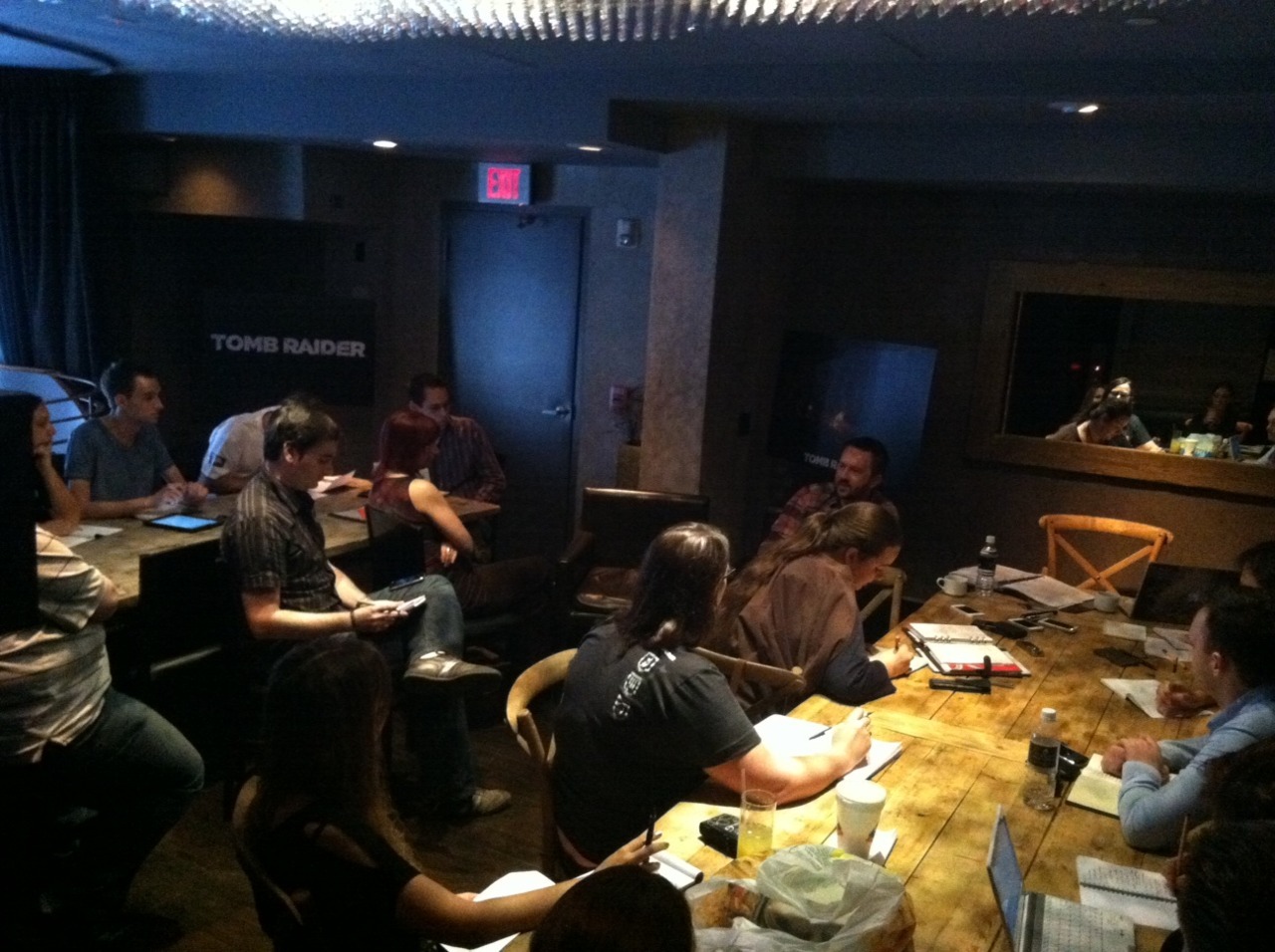




Да, мне тоже интересно, очень понравился или очень-очень. И правда, узнать бы мнение Гарда об этих демо. Но думаю, он даже если и скажет Эйсиду что, то это будут лишь похвалы, профессиональная этика.


















 Наверх
Наверх
